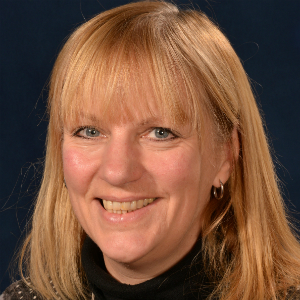This guest blog, from my colleague Wendy Nicholson, Professional Officer for Nursing focuses on developments in District Nursing
This week I attended a celebration of the Queen’s Nursing Institute (QNI) 125th Anniversary. As soon as I arrived I felt a real buzz of anticipation from around 200 community nurses in attendance. The event was a huge landmark for QNI as it also introduced their new Director – Crystal Oldman, and a milestone for our work. Earlier this year we started out on an incredible journey with QNI, our strategic partners, to develop a new vision for district nurses. The event was a fantastic way to share the 'strategy on a page'.
We have worked with some amazingly passionate District Nurses and members of wider community nurse family to develop the draft vision. They have been pivotal to our journey. I would like to extend a huge vote of thanks to all the practitioners, managers, educationalists and commissioners who have given their time, shared their thoughts, desires and ambition for the profession, capturing the uniqueness of their service to shape a shared vision.
Those involved in the work told me they were really proud and felt a great sense of ownership of the vision and an opportunity to lift and inspire the profession.
We have set the vision in the context of the national nursing, midwifery and care giver strategy, and tested this with passionate members of our task groups and focus groups who set out the challenges whilst seeking good practice and solution focussed approaches. See the Draft model of Community Nursing for Improved Health and Wellbeing
The initial feedback has been overwhelming, supportive, positively challenging, encouraging and thoughtful. I want to maintain the momentum and hear from District Nurses about their views. Please get in touch with your views on, for example, how it works with #6Cs, any ideas, experiences and innovation to spur future development by 16th November - and shape your vision for district nursing.
Wendy Nicholson
Follow me on Twitter @WendyJNicholson

2 comments
Comment by caroline hannan posted on
It is really good to see a model developed to promote the work of the 'silent' workforce. but to have the necessary skills to deliver requires good leadership by DN's and support for staff to undertake the DN degree course. this is something that is lacking in our area since the deanery withdrew financial support for staff to attend the one year full time course. it enabled experienced staff nurses to be released with backfill. releasing staff to undertake study is an ongoing challenge. meeting in house mandatory training requirements is a priority and not always met due to demands of work. a recognised staff to patient ratio is required and recognition from commissioners to fund extra staff is required. we always seem to be fire fighting and challenged with being innovative, but blocked by commissioners if we try because they like to have their nurses based with them, and seeing their patients. this provides barriers to introducing leaner ways of working, such as working geographically in bigger teams. my one wish is to bring back funding to allow backfil for staff to progress and undertake the 1 year degree course.
thank you.
Comment by Irene Zeller posted on
I highly commend the recognition of the District Nursing workforce in this model, who for far too long have not been acknowledged or developed, as stated in Caroline’s response above with the term “silent workforce”. This can still be seen with the dated Standards that guide the District Nursing recordable qualification, which have not been updated since 2001 (NMC 2001). By comparison, Health Visitor training has been guided and developed with more recent documentation and this has led towards a real enhancement of their professional standing.
There must also be acknowledgment regarding the lack of cohesion for the titles and roles of those working within the community setting that has not been to the benefit of District Nursing. These are certainly confusing for both patients and indeed other nurses (for example colleagues working within acute care sector), and include titles such as Practice Nurses, Case Managers, Community Matrons, Community Nurses as well as District Nurses, (and this does not include the teams that exist in a variety of communities as well such as Rapid Response, Crisis Intervention etc). The term Health Visitor provides much greater clarity. It is time to consider other new ways of working, for example exploring the model for Community Mental Health Teams, used to support a broad range of patients with mental health disease/illness. Such a model could encompass some or all of the previously mentioned roles, alongside Allied Health Professionals. This would enable a much greater ability to both support the acutely ill patient in coming home from hospital sooner and reduce hospital admissions by providing on-going support; thus managing complex care and cases in both a proactive and responsive way.
There are going to be huge changes within care delivered within the community setting over the next year. Care is now very financially led, with value for money in the current economic climate being at the forefront. However, quantitative measures are extremely difficult to undertake within a community setting and do not necessarily indicate a quality of service. Should District Nursing take a lead from Health Visiting, recognising that the long term nature of caring for patients in the community needs to be invested in centrally with good quality training and a cohesive workforce? The beginnings of this are a supported training programme, with the inclusion of independent prescribing in order to properly manage patients. The expansion of student placement capacity within the community would also ensure that there is the recognition early on of a valuable and meaningful career development and progression in a setting other than a hospital.